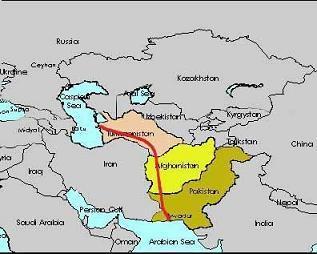
The Washington Post has introduced us to a controversy over Afghanistan war strategy. The Post reports that operations in Delaram (in the southwest) are "far from a strategic priority for senior officers at the international military headquarters in Kabul. One calls Delaram, a day's drive from the nearest city, 'the end of the Earth.' Another deems the area 'unrelated to our core mission' of defeating the Taliban by protecting Afghans in their cities and towns."
Why then are the Marines fighting in this part of the country?
The Post continues, "The Marines are constructing a vast base on the outskirts of town that will have two airstrips, an advanced combat hospital, a post office, a large convenience store and rows of housing trailers stretching as far as the eye can see. By this summer, more than 3,000 Marines -- one-tenth of the additional troops authorized by President Obama in December -- will be based here."
Again the Post adds, "They [some officials] question whether a large operation that began last month to flush the Taliban out of Marja, a poor farming community in central Helmand, is the best use of Marine resources. Although it has unfolded with fewer than expected casualties and helped to generate a perception of momentum in the U.S.-led military campaign, the mission probably will tie up two Marine battalions and hundreds of Afghan security forces until the summer."
And finally the Post reports, "Brig. Gen. Lawrence D. Nicholson, the top Marine commander in Afghanistan now wants Marine units to push through miles of uninhabited desert to establish control of a crossing point for insurgents, drugs and weapons on the border with Pakistan. And he wants to use the new base in Delaram to mount more operations in Nimruz, a part of far southwestern Afghanistan deemed so unimportant that it is one of the only provinces where there is no U.S. or NATO reconstruction team."
When you check the maps above a clearer picture emerges. The bottom map is the proposed pipeline route to move Caspian Sea oil through Turkmenistan into Afghanistan and then finally through Pakistan to ports along the Arabian Sea where U.S. and British tankers would gorge themselves with the black gold.
The whole reason the U.S. is in Afghanistan and Pakistan today is to deny those pipelines from being routed through Russia, China, or Iran.
Then look at the top map where the U.S. Marines are operating inside Afghanistan and causing some controversy within the military. They are building big bases in desolate southwestern Afghanistan and wanting to extend control in that region near the border of Pakistan - all of which are areas that must "be controlled" if pipelines are to be successfully built and maintained.

 Khamenei: Fire Festival has no basis in Islamic Sharia and causes a lot of harm and corruption
Khamenei: Fire Festival has no basis in Islamic Sharia and causes a lot of harm and corruption


 Expression of condition
Expression of condition